This Squid Ink Pasta with Miso-Mushroom Sauce is a Total Game-Changer
I’ve spent a lot of time in professional kitchens, and you see trends come and go. But every once in a while, you stumble upon a flavor combination that just works on a deep, fundamental level. This squid ink pasta with a rich miso-mushroom sauce is one of those dishes. It’s this incredible bridge between Italian coastal vibes and the savory soul of Japanese cooking.
In this article
Now, let’s be real. This isn’t your average 30-minute weeknight meal. It’s a project. But it’s the kind of project that’s genuinely rewarding, and honestly, not as hard as it looks. We’re going to walk through this the way a head chef would teach a new cook, focusing on the ‘why’ behind every step. Once you get the logic, you can nail this dish every single time. So, let’s get into it and cook something with some serious substance.
So, Why Does This Actually Work? The Flavor Science
A truly great dish isn’t just a random list of ingredients; it’s a bit of delicious science. Understanding what’s happening in the pan is what separates a recipe-follower from a real cook. For this pasta, it all comes down to three key ideas: the magic of squid ink, the power of umami, and the simple trick of a perfect emulsion.
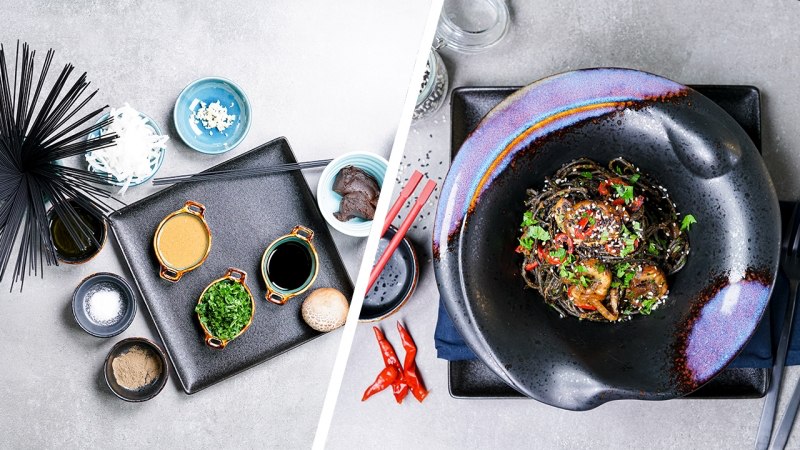
Squid Ink is More Than Just a Pretty Face
First up, the star of the show: squid ink. A lot of people think it’s just for that dramatic black color, but the pros know it’s a seasoning in its own right. It has this subtle, briny flavor that whispers of the ocean without being fishy at all. It’s smooth, slightly rich, and adds a layer of savory depth you just can’t get from anything else.
When you’re buying dried squid ink pasta, look for a package that’s a uniform, deep black. If it looks kind of speckled or greyish, it probably means they skimped on the ink. Good quality stuff will even smell a little briny when you cook it. The squid ink pasta is usually the biggest splurge for this dish, typically running about $7 to $12 a package at a specialty store or online, but it’s absolutely worth it.
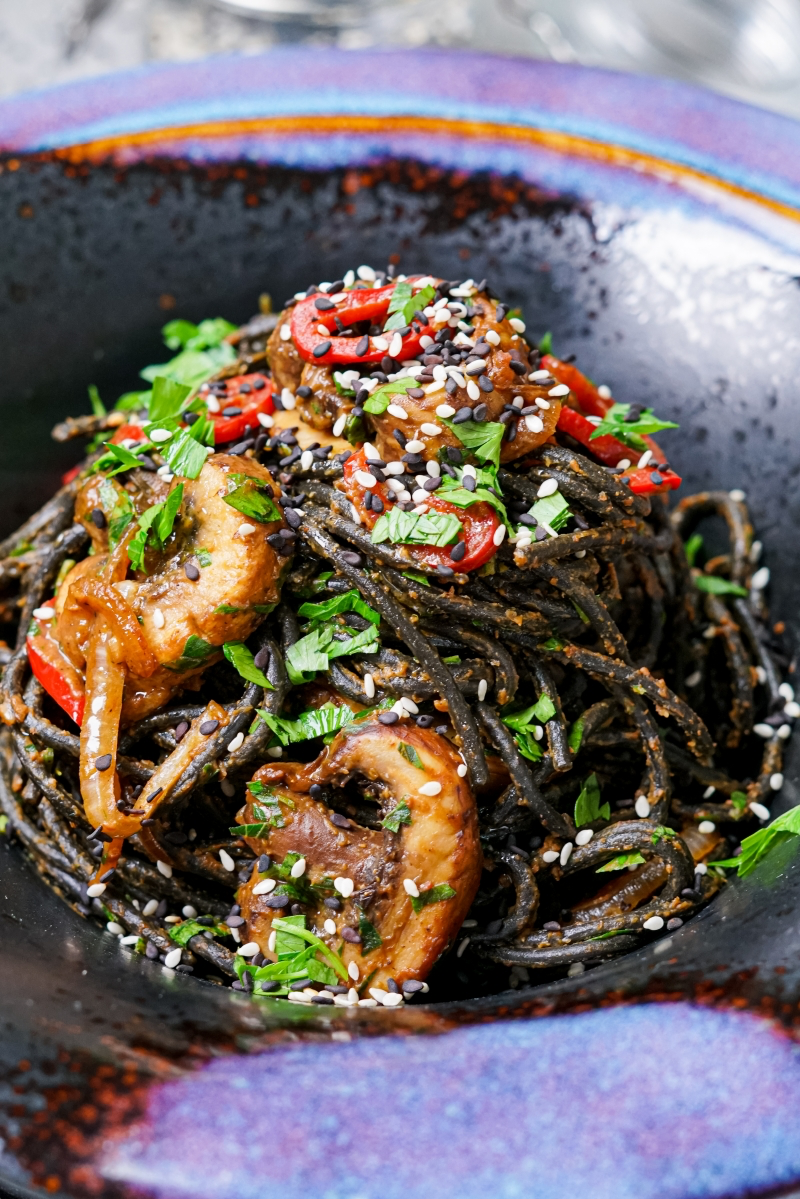
The Umami Powerhouse: Miso & Mushrooms
This dish is an absolute umami bomb, and that’s a good thing. Umami is that fifth taste—the savory, meaty, deeply satisfying flavor you find in things like aged cheese, seared steak, and, you guessed it, miso and mushrooms.
We get a triple-hit here:
- Miso Paste: This fermented soybean paste is pure umami gold. You’ll find it in the refrigerated section of most big grocery stores, usually near the tofu. A tub costs around $8 to $12 but lasts for ages in the fridge. For this recipe, yellow (shinshu) miso is your best bet; it’s got a great nutty, earthy balance. White (shiro) miso is milder and a bit sweeter, while red (aka) miso is much stronger and saltier—save that one for heartier glazes or stews.
- Soy Sauce: Another layer of fermented, salty goodness.
- Seared Mushrooms: This is critical. When you fry mushrooms over high heat, you’re not just cooking them; you’re starting the Maillard reaction. That’s the chemical process that creates the beautiful brown crust and complex flavor on everything from toast to a perfectly seared steak. The key is a hot pan and not overcrowding it. If you pile them all in at once, they’ll just steam and get rubbery. You want to hear a sizzle, not a sad hiss.
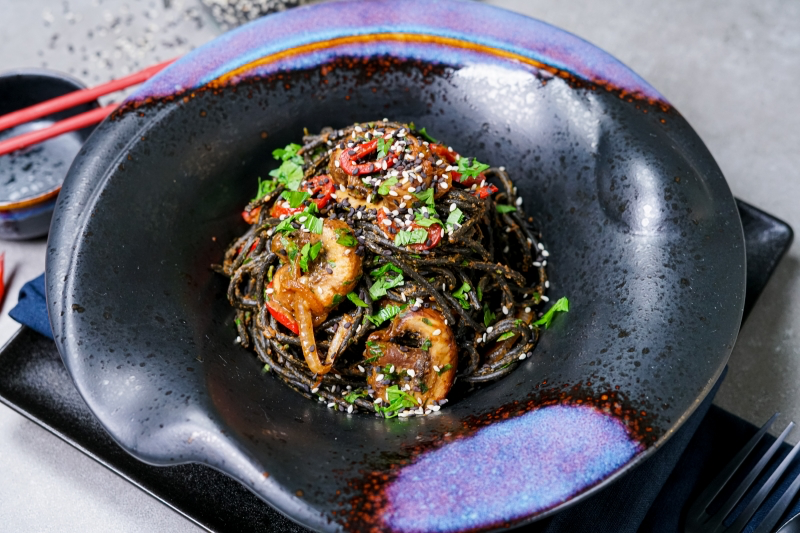
The No-Cream Creamy Sauce Trick
The final piece of the puzzle is emulsification. Sounds fancy, but it’s just mixing fat and water, which normally don’t get along. The sauce here combines fat (from the peanut butter and olive oil) with water-based stuff (like soy sauce and miso). The secret weapon that brings it all together? The pasta water.
As pasta boils, it releases starch into the water, turning it cloudy. That starchy water is liquid gold! It acts as a binder, helping the oil and water mix into a smooth, creamy sauce that clings to every noodle. This is a classic restaurant technique.
Quick tip: Never, ever rinse your pasta, and always save some of the cooking water. I use a coffee mug to scoop out at least a cup and a half right before draining. You won’t use it all, but it’s your insurance policy for a perfect sauce.
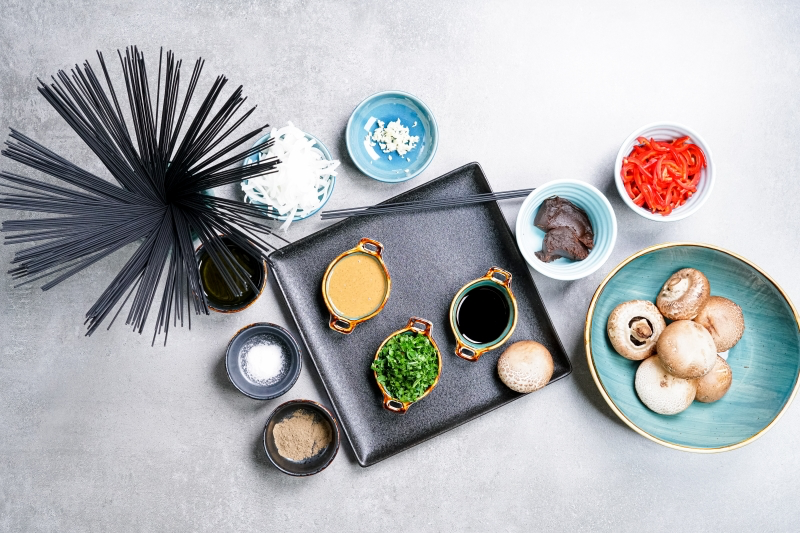
The Recipe & Game Plan
In a professional kitchen, everything starts with mise en place—getting all your ingredients prepped and ready before you start cooking. For a dish that comes together this fast at the end, it’s non-negotiable.
Time Breakdown: Prep Time: 20 minutes | Cook Time: 25 minutes | Total: ~45 minutes
Budget: Expect this to cost around $25-$35 for 2-3 generous servings, depending on the quality of your pasta and mushrooms.
Your Shopping List (for 2-3 servings):
- Squid Ink Pasta: 8 oz (225g) of high-quality spaghetti or linguine. Look for bronze-cut pasta if you can find it; the rough texture grabs sauce like a dream. Find it at Italian delis, specialty food stores like Whole Foods, or online.
- Mushrooms: 1 lb (450g) cremini mushrooms. They have a great firm texture. But honestly, feel free to level up with shiitakes for a smokier flavor or maitake (Hen of the Woods) for crispy edges. Just wipe them clean with a damp paper towel—never wash them!
- The Aromatics: 1 medium yellow onion, 4 cloves of fresh garlic, and 1/2 of a red bell pepper.
- The Sauce Base: 2 tbsp white or yellow miso paste, 1 tbsp natural peanut butter (the kind with just peanuts and salt), and 2 tbsp soy sauce or tamari (for a gluten-free option).
- The Rest: 2 tbsp olive oil, a handful of fresh parsley (chopped), and toasted sesame seeds for garnish.
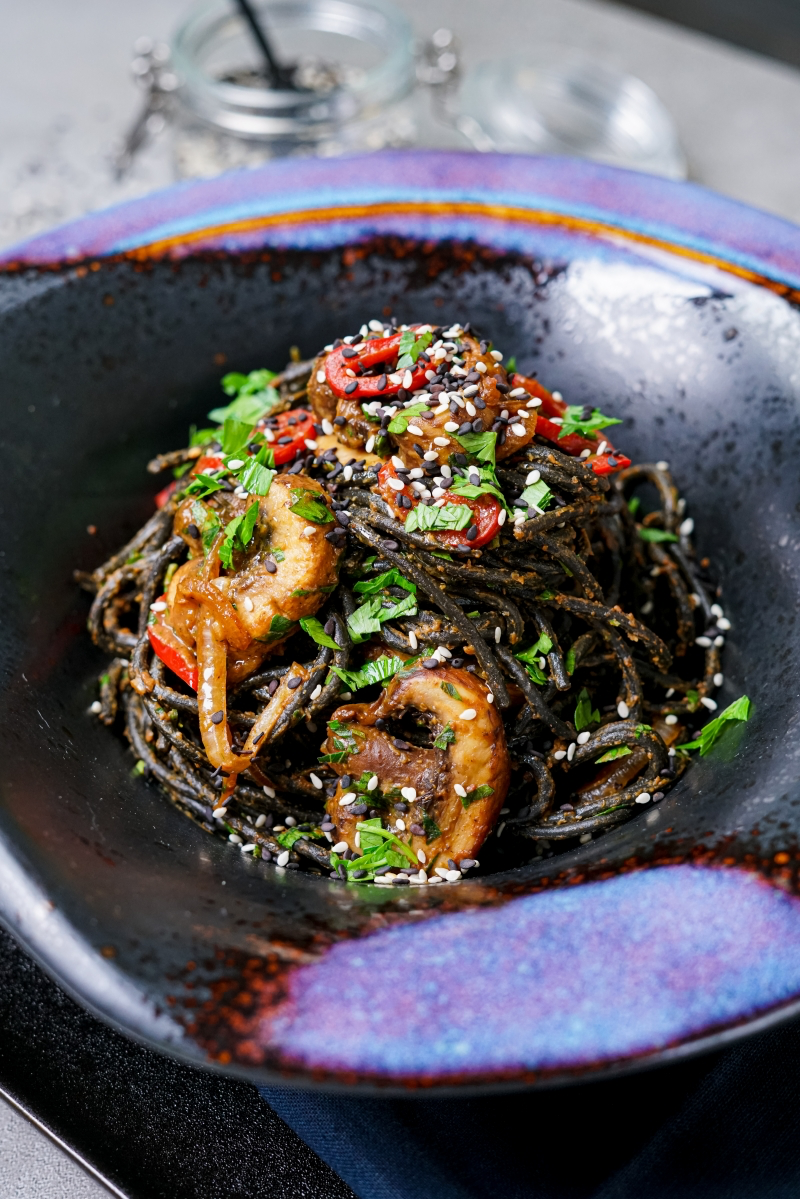
Step-by-Step Execution
- Get Prepped: Get a big pot of water boiling and salt it well (it should taste like the sea). Slice your mushrooms, finely dice the onion and bell pepper, and mince the garlic. In a small bowl, combine the miso paste, peanut butter, and soy sauce. Have a whisk ready. Now you’re ready to cook like a pro.
- Cook the Pasta: Drop the pasta into the boiling water. Cook it for about 2 minutes less than the package directions for al dente. It will finish cooking in the sauce. Before you drain it, scoop out that mugful of starchy pasta water!
- Sear the Mushrooms: While the pasta is cooking, get a large skillet or wok over high heat. Add the olive oil. Once it shimmers, add the mushrooms in a single layer. Don’t touch them for 2-3 minutes! Let them get a deep, brown crust. Then, give them a toss and cook until they’re nicely colored all over.
- Build the Flavor: Lower the heat to medium and add the onion and bell pepper to the pan with the mushrooms. Cook for 4-5 minutes, until the onion is soft. All those browned bits at the bottom of the pan? That’s pure flavor. The moisture from the onions will help lift it up. Finally, add the minced garlic and cook for just one more minute until you can smell it. Don’t let it burn!
- Make the Sauce Slurry: Add about 1/4 cup of the hot pasta water to your bowl of miso and peanut butter. Whisk it like crazy until it’s a smooth, lump-free slurry. This little step keeps the miso from clumping up in the hot pan.
- Bring It All Together: Add the drained, still-undercooked pasta directly to the skillet with the veggies. Pour the miso slurry over everything. Add another 1/4 cup of pasta water. Now, using tongs, toss everything vigorously. You’ll see the magic happen as the sauce thickens and coats the pasta beautifully. If it looks too thick, just add another splash of pasta water until it’s perfect. This takes about 2 minutes.
- Finish and Serve: Kill the heat and stir in the fresh parsley. Give it a taste. With the salty miso, soy sauce, and pasta water, you probably won’t need any extra salt. Serve it up immediately with a sprinkle of toasted sesame seeds.

Heads Up! 3 Common Mistakes to Avoid
This dish is amazing, but a few simple errors can derail it. Here’s what to watch out for:
- Crowding the Pan: This is the #1 mushroom mistake. If you pile them in, they steam instead of sear, turning them grey and rubbery. The fix: Cook them in two batches if your pan isn’t big enough. It’s worth the extra five minutes.
- Lumpy Miso Sauce: Just dumping cold, thick miso paste into a hot pan is a recipe for clumps. The fix: Always make the slurry first by whisking the miso with a little hot pasta water in a separate bowl.
- Over-salting the Dish: Miso, soy sauce, and pasta water are all salty. It’s easy to go overboard. The fix: Do not add any extra salt until you taste the finished sauce at the very end. You can always add more, but you can’t take it away.
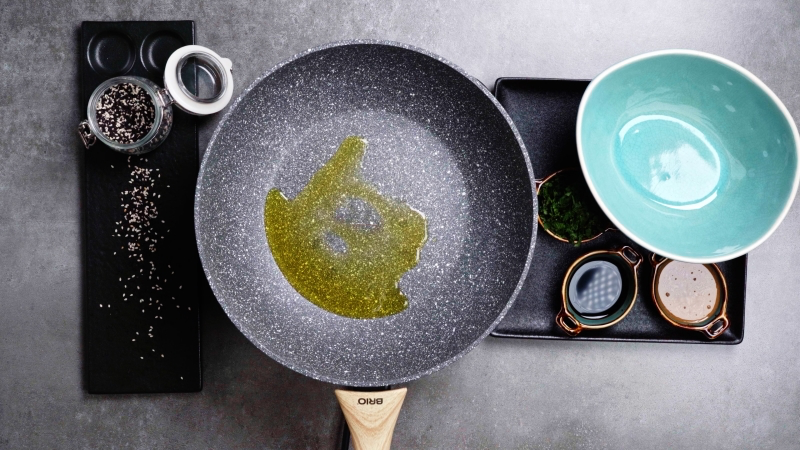
Ways to Riff and Adapt
Because this is a fusion dish, it’s practically begging you to play with it. Want to lean more Italian? Add a splash of dry white wine to the pan after the veggies are soft. Want to go deeper into the Japanese flavors? Use a bit of mushroom dashi (the soaking water from dried shiitakes) to make your sauce for an insane flavor boost.
By the way, this dish is fantastic with some seared scallops on top. Pro-tip for a perfect sear: pat the scallops BONE DRY with a paper towel. Season with salt and pepper. Get a pan screaming hot with a little oil and sear them for 90 seconds per side without moving them. The crust will be incredible.
A Quick Note on Allergens
Just a heads up, this recipe contains several major allergens: shellfish (squid ink), soy (miso, soy sauce), peanuts, and gluten (pasta). If you’re cooking for others, please be mindful. You can use tamari and a good gluten-free pasta to make it gluten-free, or tahini instead of peanut butter, but there’s no real substitute for squid ink. If shellfish is an issue, it’s best to try a different dish altogether.
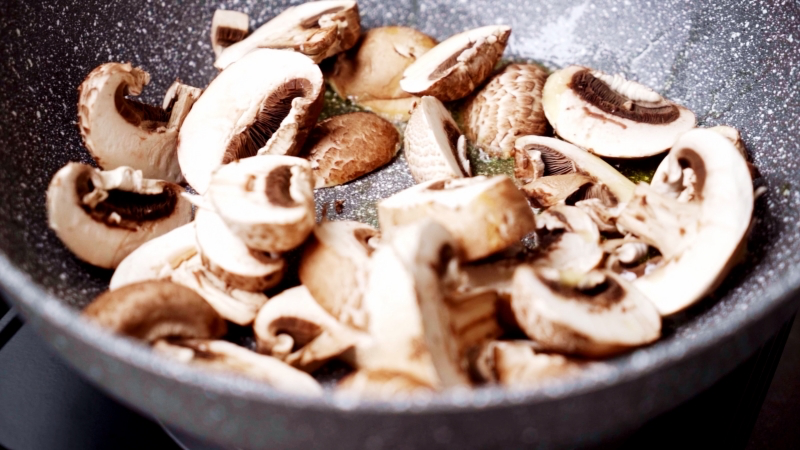
Inspiration:
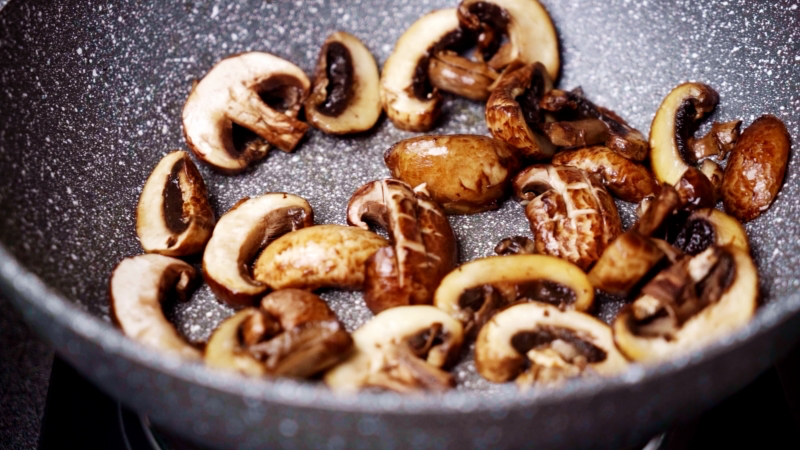
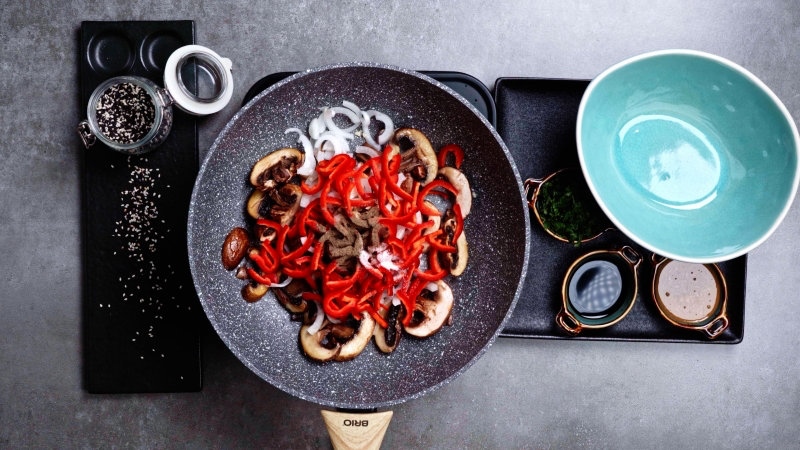
White Miso (Shiro): Mild, slightly sweet, and delicate. It allows the mushroom and brine notes from the pasta to shine through, creating a more balanced, nuanced sauce.
Red Miso (Aka): Fermented longer, it’s saltier and far more pungent. Use this if you want an intensely savory, bold sauce that stands up to the squid ink with its own powerful flavor profile.
For this specific recipe, starting with a high-quality white miso like Hikari Miso Organic is often the chef’s choice to avoid overpowering the other elements.
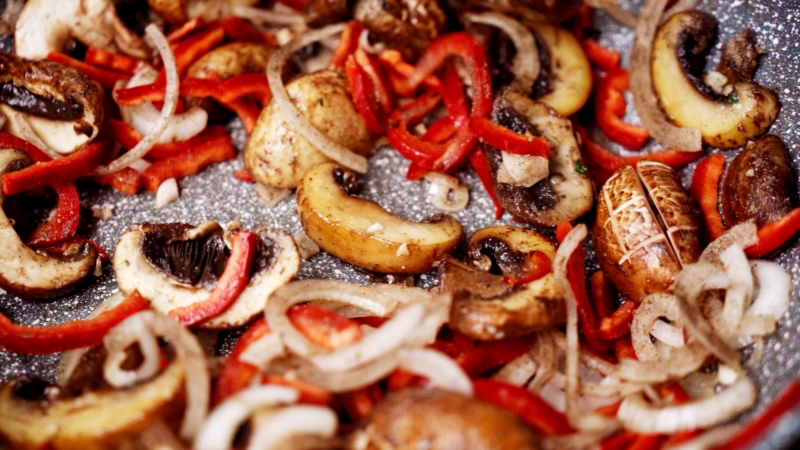
Squid ink, or ‘nero di seppia’, has been a culinary staple in Italy for centuries, particularly in the Veneto region and Sicily. It was originally a peasant food, using the entire squid out of necessity, transforming a humble ingredient into a regional delicacy.
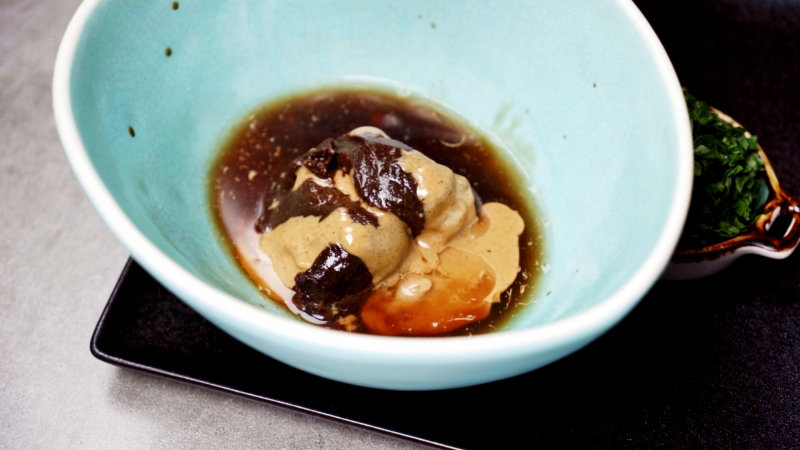
The dramatic black canvas of the pasta is your playground. To make the dish truly pop, think about color and texture contrast in your garnish:
- Vibrant Green: Finely chopped chives or parsley.
- Bright Red: A sprinkle of red pepper flakes or thinly sliced bird’s eye chili.
- Toasted Crunch: Panko breadcrumbs toasted in butter until golden.
- Luxe Finish: A few drops of high-quality truffle oil and a grating of fresh Parmesan.
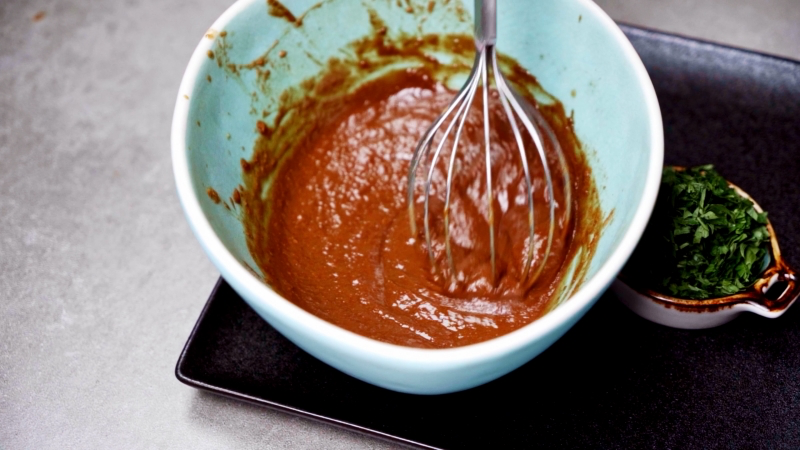
This dish demands the right atmosphere. It’s a slow-burn, sensory experience. Dim the lights, put on a curated playlist—think sophisticated, down-tempo lounge or jazz—and pour a glass of wine before you even start cooking. The process is part of the pleasure, a deliberate shift from a rushed meal to a culinary main event. Make the journey as memorable as the destination.
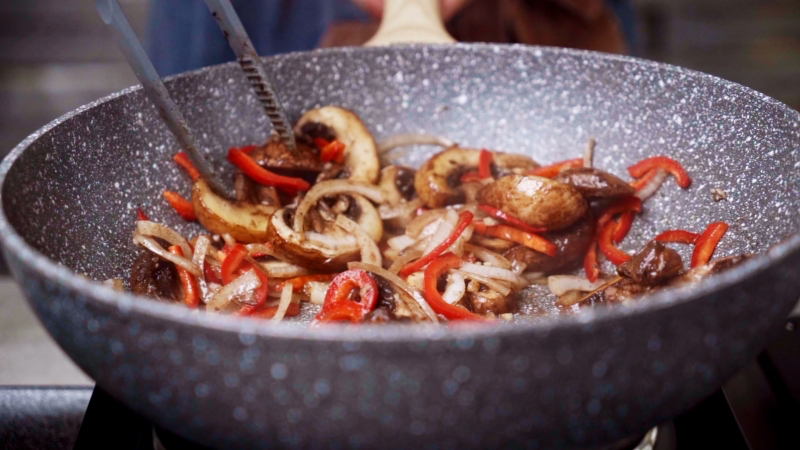
The secret to a restaurant-quality, silky sauce? Don’t fear the pasta water.
That starchy, cloudy water left over from boiling your pasta is liquid gold. The starches have leached out into the water, and when you add a few splashes to your miso and mushroom base, they act as an emulsifier. This helps the fats and liquids bind together into a creamy, cohesive sauce that clings perfectly to every strand of pasta, rather than separating into an oily slick.
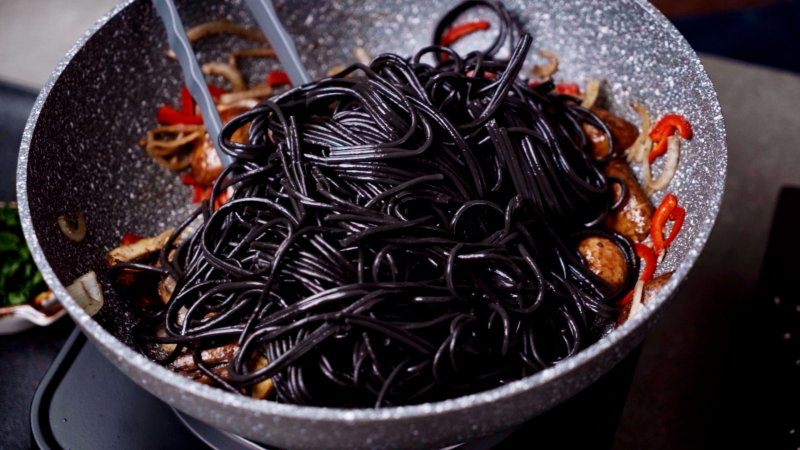
- A richer, deeper umami complexity.
- A subtle, smoky flavor that complements the earthiness of the mushrooms.
- An extra layer of satisfying texture.
The ingredient? Pan-seared scallops or smoked firm tofu. Sear them separately until golden brown and either slice and mix into the pasta or place them on top for a stunning presentation.
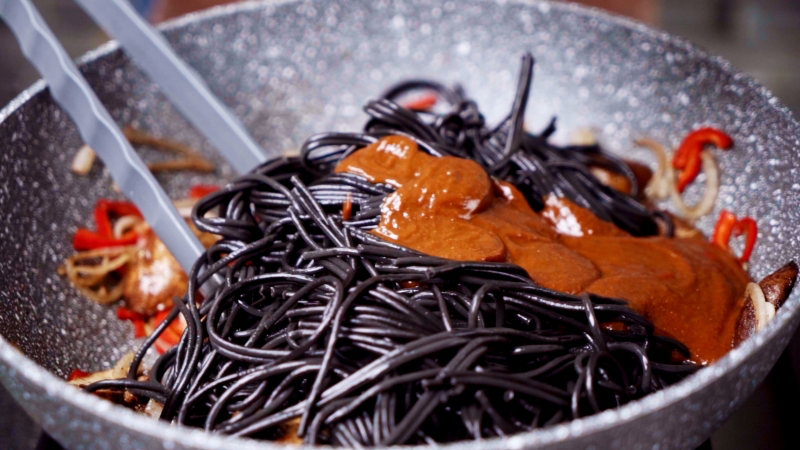
According to a 2021 report by the Japan External Trade Organization (JETRO), global exports of Japanese miso have increased by over 70% in the last decade.
This surge isn’t just about sushi; it’s about Western chefs and home cooks discovering miso’s incredible versatility as a ‘flavor booster.’ From glazes on salmon to savory notes in caramel desserts, and, as seen here, a creamy base for pasta sauce, miso has officially broken out of the soup bowl.
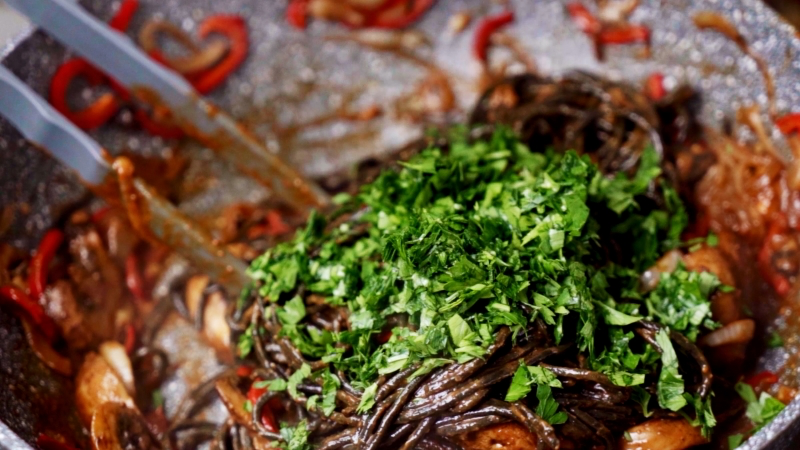
Crucial step: After sautéing your mushrooms and garlic, deglaze the pan. Pour in a splash of dry white wine (like a Pinot Grigio) or even sake and scrape up all the browned bits stuck to the bottom. These ‘fond’ are packed with concentrated flavor and are essential for a deep, savory sauce.
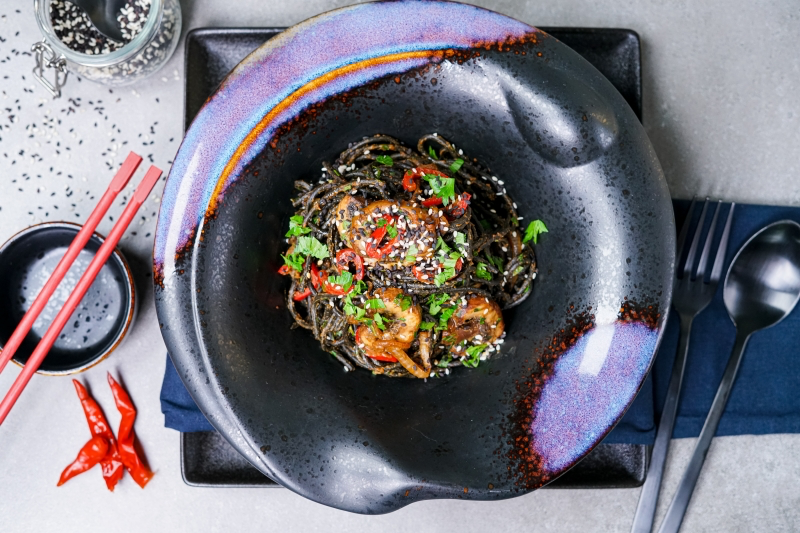
The briny, savory profile of this dish opens up fantastic pairing possibilities. You need a drink with enough acidity to cut through the richness of the sauce.
- White Wine: A crisp, dry Italian Vermentino or a mineral-driven Sauvignon Blanc from the Loire Valley will complement the oceanic notes of the squid ink.
- Sake: A dry Junmai sake offers a beautiful parallel to the miso, enhancing the umami without overwhelming the palate.
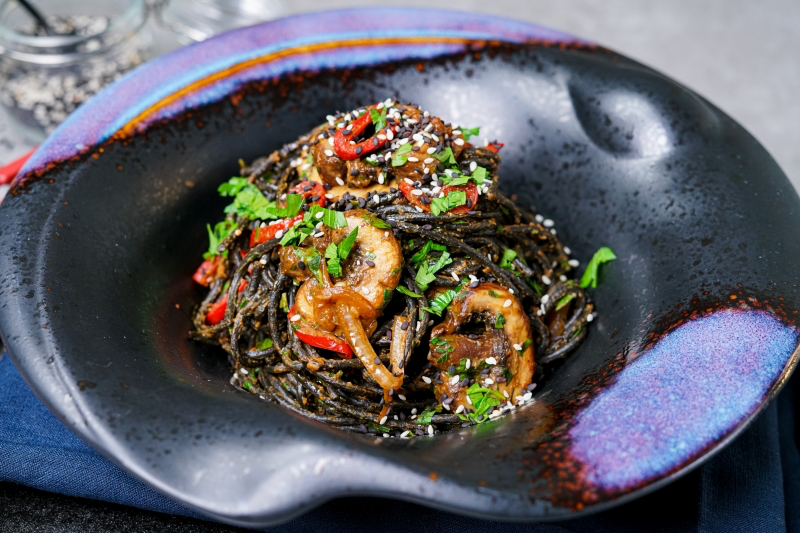
Finding top-tier squid ink pasta is easier than you think. Look beyond the standard supermarket aisle. Your best bets are specialty Italian markets, the gourmet section of stores like Whole Foods, or online purveyors such as Eataly or a brand like Rustichella d’Abruzzo. A good quality product should be almost jet black, not grey, indicating a generous amount of ink was used.
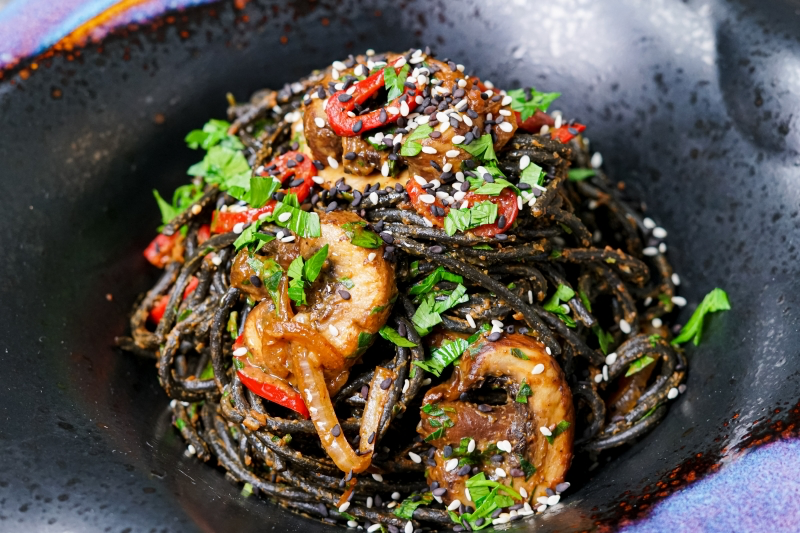
My mushrooms are soggy and grey, not browned and flavorful. What did I do wrong?
You likely overcrowded the pan. Mushrooms contain a lot of water. If you pile them all in at once, they steam in their own liquid instead of searing. For that beautiful golden-brown color and intense flavor, cook them in batches in a hot pan with plenty of space, ensuring they make direct contact with the hot surface.

- Never use a metal spoon to scoop it out; the metal can react with the paste and alter its flavor. Always use a clean wooden or plastic spoon.
- Press a small piece of plastic wrap directly onto the surface of the remaining miso before closing the lid. This prevents oxidation and keeps the color and taste fresh.
- Store it in the coldest part of your fridge. Treated this way, a tub of miso can easily last for a year.
Shiitake mushrooms are one of the few natural food sources of Vitamin D, especially if they are sun-dried. This adds a subtle nutritional boost to their powerful savory flavor.










